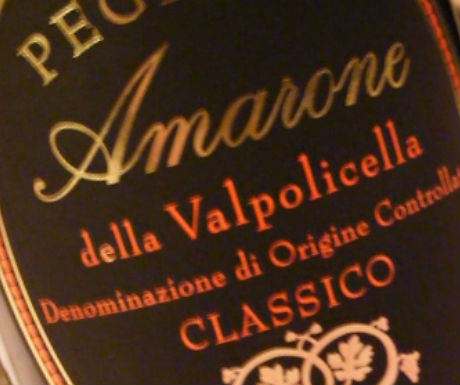Amarone is one of Italys most sought after wines. Produced in the Valpolicella region of the Veneto, its an intense, full-bodied and elegant big red, prized by wine enthusiasts across the globe. A visit to an Amarone producer is always a highlight and it’s somewhere you can learn about this amazing wine. Here are a few facts about Amarone that may surprise you!

1. It was an accident
The first Amarone wine was produced accidentally a Recioto wine, a sweet dessert wine, taken a bit too far. Recioto wines are sweet wines produced from grapes that have been carefully dried to concentrate the sugars. Fermentation of wine is the process of converting sugar to alcohol. In Recioto wines, the fermentation process is stopped before all the sugar is consumed, resulting in a sweet wine. In the case of Amarone, legend has it that the fermentation process for a batch of Recioto progressed too far, until the sugar was totally consumed, resulting in a dry, high alcohol, full-bodied wine. The name itself, Amarone, comes from the word amara, or bitter.
2. The same grapes are used to make other wines
Amarone wines are traditionally based on the local Corvina grape, optionally blended with the following: Rondinella, Molinara, Corvinone, Rossignola, Negrara, Barbera, Sangiovese, even the indigenous grape Oseleta. But there are several different styles of wines made in Valpolicella and Bardolino from these very same grapes. Enjoy a crisp, sparkling Chiaretto rose, a young Valpolicella, a fuller-bodied Valpolicella Ripasso, or a sweet Recioto. These versatile grapes produce a wine for just about every occasion.
3. There are many rules to follow
The production of this DOCG wine is tightly controlled. Not only are the type and origin of the grapes specified, but many other rules apply. For example, each year the Amarone DOCG authorities tell producers when they can begin harvest if they begin early, the wine cannot earn the DOCG designation.
4. Nothing goes to waste
Another wine produced in this region is the Ripasso della Valpolicella DOC. The ripasso technique is a relatively new innovation in wine production, introduced by Masi in the early 1980s. Here, the leftover grape skins and seeds from the Recioto and Amarone fermentation process are added to Valpolicella, and the mixture is allowed to macerate for an extended period of time. Ripasso della Valpolicella wines are fuller-bodied than a standard Valpolicella, with a higher alcohol content. Today, most Amarone producers produce a Ripasso wine as well, and the Ripasso wine was also awarded its own DOC status in 2009.
5. Is that Cabernet Sauvignon I taste?
Many Amarone producers are including Cabernet Sauvignon in their blend. This is allowed, up to 15% of the total. This is done to make the wines more familiar and therefore hopefully more attractive to an international audience. But it is not a traditional recipe for Amarone.